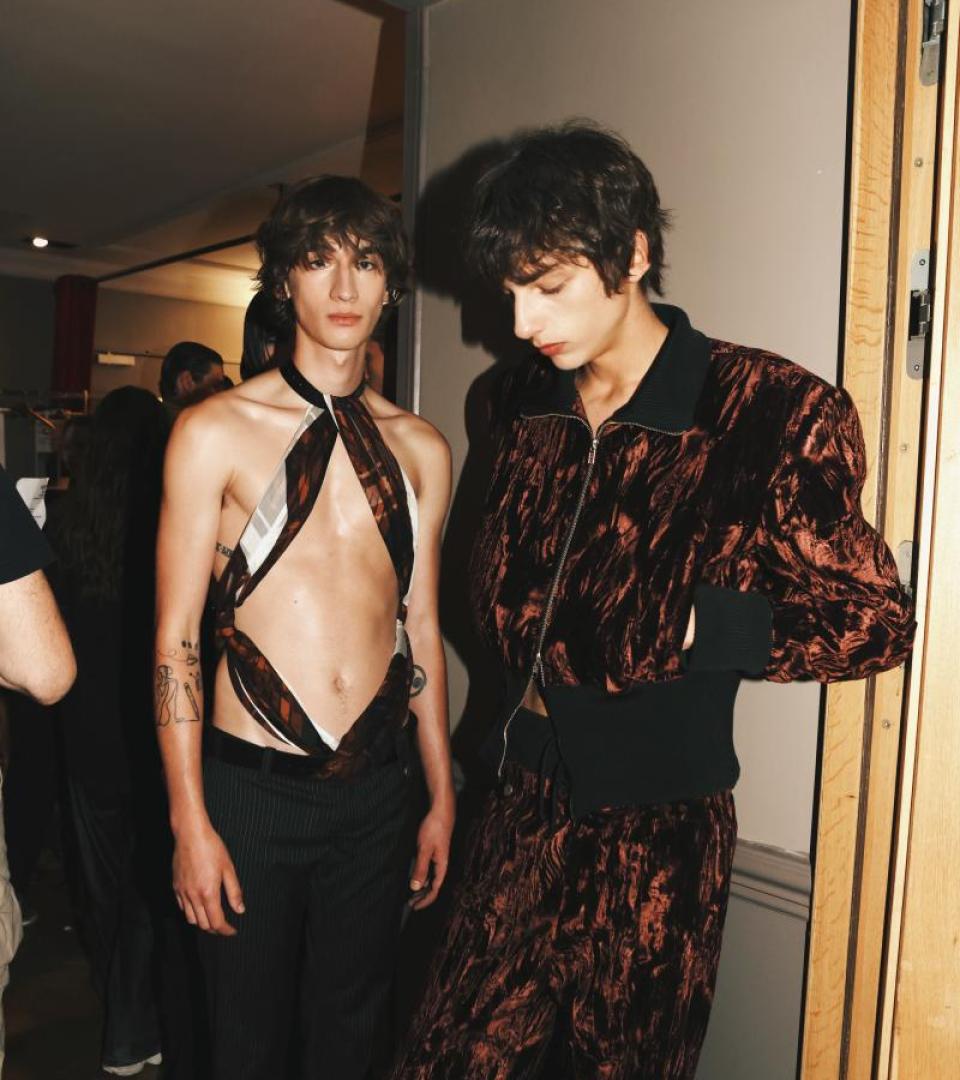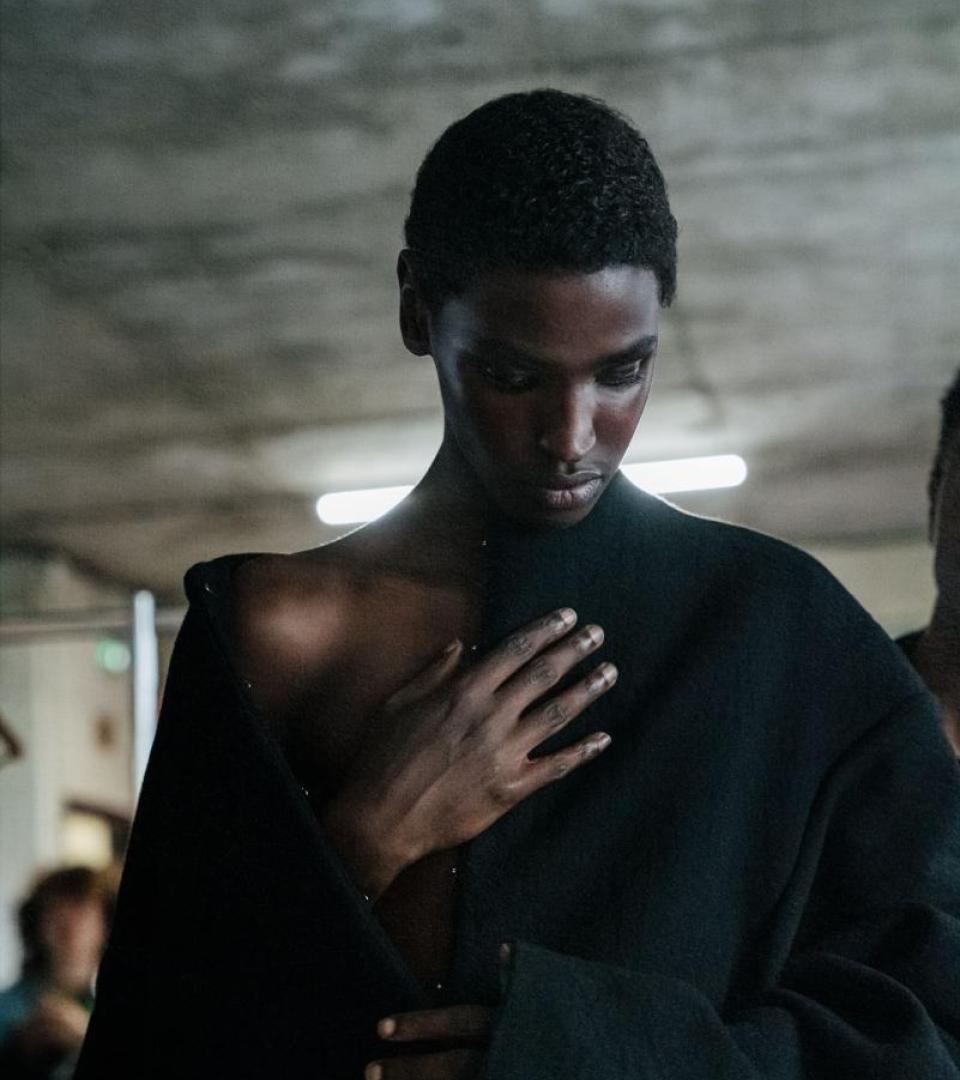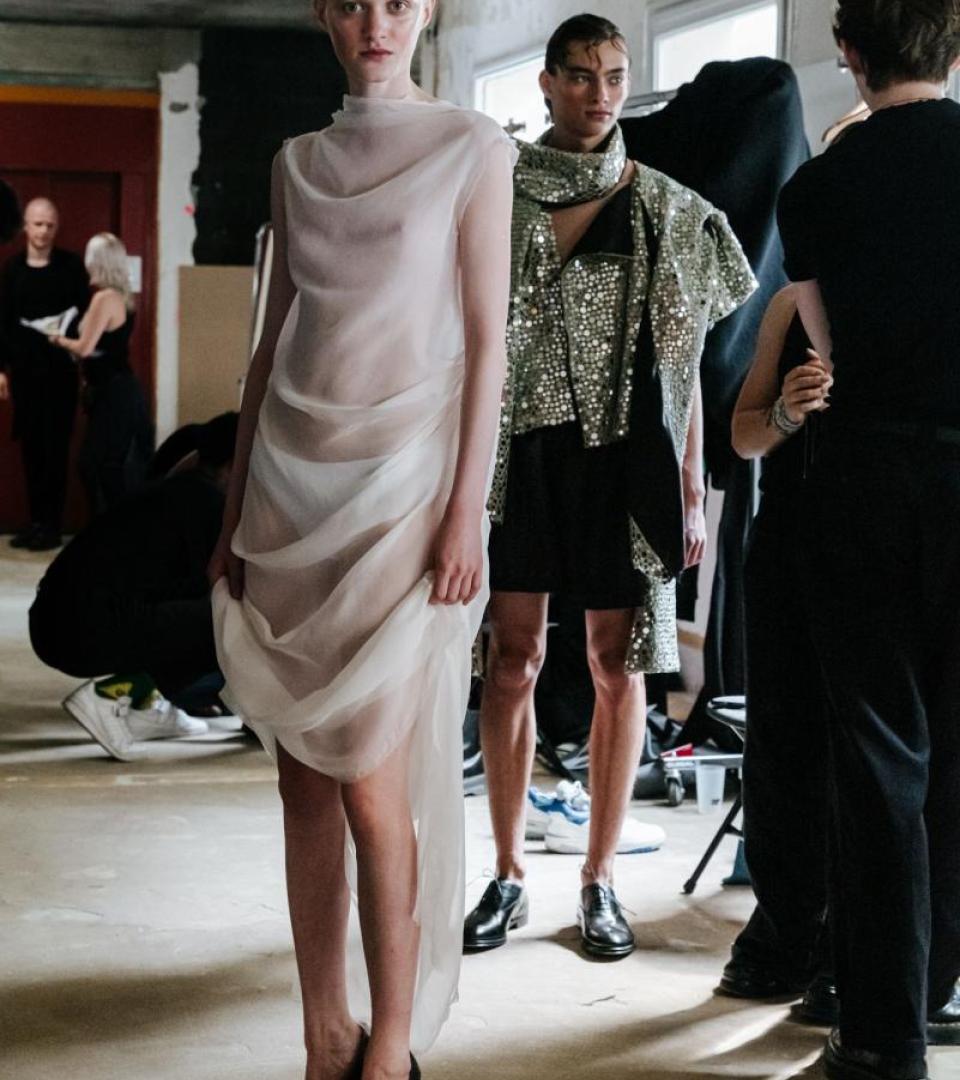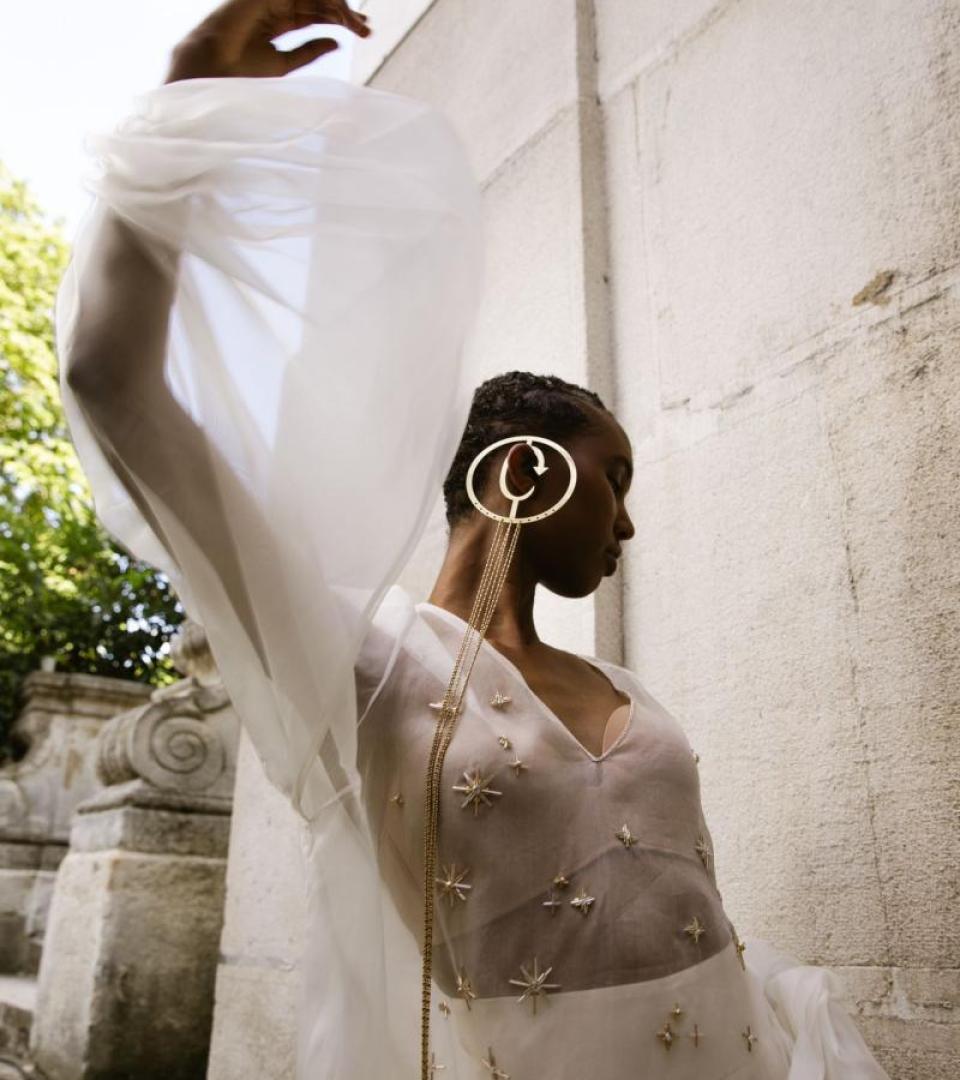Robert Mercier – Creative, free spirit
The act of creation encompasses work, motivation, and liberation. This is exemplified by Robert Mercier, an independent artisan who has collaborated with Jean Paul Gaultier, Maison Margiela, Balmain, Schiaparelli, Mugler, Jeanne Friot, and crafted some of the most viral pieces in recent years.
"Our story begins within the intricacies of the French educational system. From adolescence onward, young students must choose between the general high school and the technical high school, between the 'intellectuals' and the 'manual workers'. The issue lies not so much in this inherently academic distinction, but in the social disdain it generates. 'We were called the fleabags,' recounts Robert Mercier with a wry smile, redirected towards this technical track because he was seen as non-academic and too much of a dreamer. Among the options offered by his school - Accounting, Auto Repair, Leatherworking – “the choice was quickly made.” He chose leatherworking, out of resignation. Freshly graduated, he heads towards the Louis Vuitton workshops to become a trunk maker. But reality sets in, as it was the last year when military service was mandatory in France. He was then asked to join the saddle-harness department of the Republican Guard in Paris.
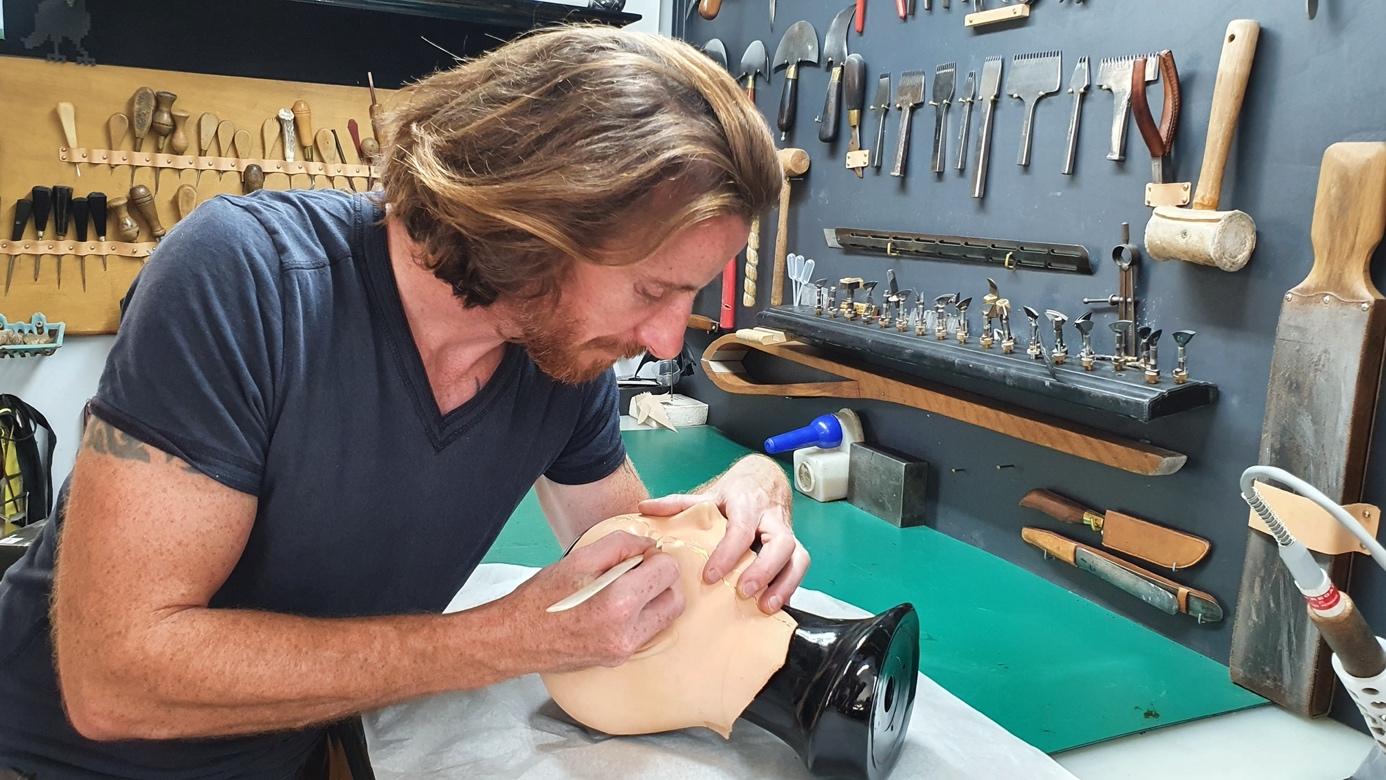
The Republican Guard, then Louis Vuitton, Hermès, Celine: Robert honed his skills among the most rigorous. In 2015, he founded his own venture, Gienah, named after a star in the Raven constellation, at the tip of the wing. 'It's always been my animal, since forever,' he says. An ode to discretion, to this bird of the shadows, like this passionate craftsman for whom external recognition is only a consequence of his work, never a goal in itself. Perhaps that's the key to success, never aiming for glory but letting one’s work do the talking.
"I truly have a dialogue with the material, it is not poetry."
His career in fashion began with Jean Paul Gaultier, who asked him to create a woman's body moulded in leather. "I had a week to make it in my studio. I'd never done that before." This first challenge launched a series of fruitful collaborations. Balmain (Olivier Rousteing), Schiaparelli (Daniel Roseberry), Ann Demeulemeester (Ludovic de Saint Sernin), Mugler (Casey Cadwallader), the collaborations follow one another. Each time, a three-way conversation begins, between the Artistic Director, the artisan and the material. "I explain to them that it's the material that will lead to a technique. I truly have a dialogue with the material, it is not poetry."
"I mould fantasised bodies. I can do cosmetic surgery without pain."
"There are two ways of recreating a body. Either I'm given the measurements and I sculpt, or I plaster the body and recreate from that mould", explains the man who never wants to do the same thing again. "I need something new, I don't want to do it again. It's this drive for novelty that drives him to constantly reinvent himself. "I get bored very quickly”, says the man for whom design remains nonetheless the best antidote against boredom. Pregnant women's bodies for the Jean Paul Gaultier Haute Couture collection by Olivier Rousteing, muscular torsos for Schiaparelli, a feather as a statement top for Ann Demeleumeester by Ludovic de Saint Sernin: Robert Mercier carves and rethinks the body.
"I'm happy to take part in fashion moments."
Clothes truly exist when they are worn and embodied. In 2021, during the presentation of Denis Villeneuve's film Dune at the Venice Film Festival, Zendaya appeared in a draped leather dress. At first glance, it feels like a wet fabric, billowing against the skin. The dress is by Balmain, designed by Olivier Rousteing. When Robert Mercier shared his prototypes on Instagram, Zendaya reached out to him, and social media went wild. Highlighting the intelligence of the hand is what turns a garment from a practical object into a work of art, a conceptual object. It humanises the piece, making you realise the work that went into it. That's what builds the myth of a garment. Add a touch of glamour (Zendaya, Beyoncé, Björk - he has worked with all three) and you have a stone added to the road traced by the history of fashion, of a fashion house. "I'm happy to be part of fashion moments," he confides.
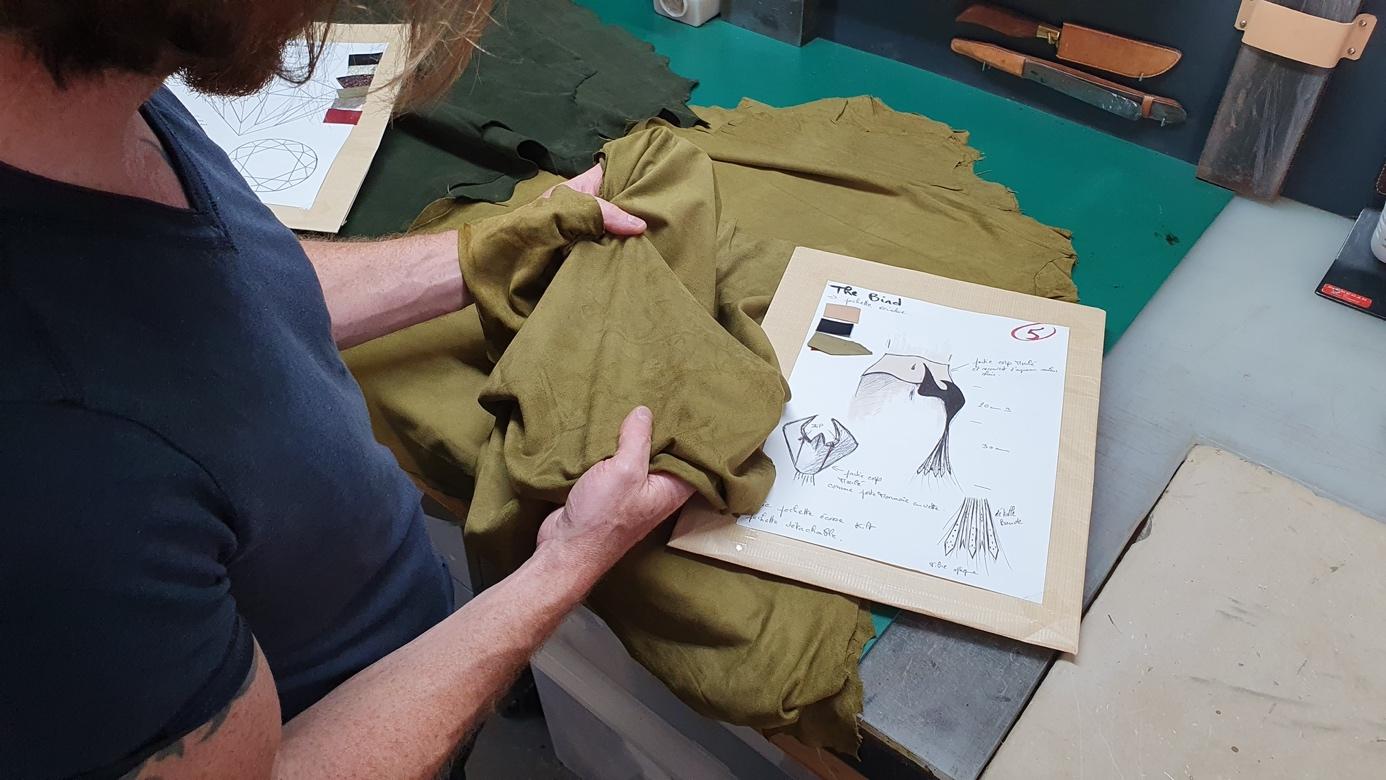
One day, Casey Cadwallader, Mugler's Artistic Director since January 2018, follows him on Instagram. "Without thinking, I sent him a message: 'When are we working together?’," no hello, straight to the point. The answer was even more straightforward: "Now". The next thing he knew, Robert was in their offices, and he was asked to dress Beyoncé for her 2023 world tour. Although the singer made her tour a permanent fashion show, switching designer looks every night, one look recurred regularly: the bee, signed by Mugler, conceived by Cadwallader and crafted by Mercier. "When she wasn't wearing it, it was being repaired", because she was rocking it on stage. "It was painted by a friend of mine, a panel beater". The nicest compliment I ever received was when someone said to me, 'It looks like a piece from the Mugler archives'.“
During Haute Couture Week in January 2024, Maison Margiela Artisanal staged a masterly show. Remember the porcelain and leather collars? "To catch an Artistic Director, you have to impress him". To achieve the porcelain effect with leather, Mercier began by making plates. He sends the teams a parcel full of porcelain plates, which fold up magically. "It's a secret, I'm keeping the technique to myself.”
"When I'm working, I'm hyper-concentrated, it's like being in a trance."
Mercier works alone in his atelier, a stone's throw from Paris, and his productivity defies all odds. "It takes 19 hours to make a Kelly. When I worked at Hermès, it took me 9.50 hours." He produces pieces at breakneck speed. "When I was making the draped dresses, I draped in my sleep. I enter deep into the technique. And I'm the first one to be impressed by what comes out."
"People can copy me, I don't mind.”
On social media, he attracts younger people who want to follow in his footsteps. "I tell them that I didn't start by dressing Zendaya, I started by working.” Ideas, even revolutionary, are nothing without perfect execution. "Today, the technique comes to me spontaneously, but I've crafted a lot of Hermès bags!” he exclaims. Because once you've mastered the game, the rules are no longer the same. Try talking to Mercier about transmission and he'll just shrug and smile. "When I explain to students how I work, they reproduce what I do. That's not the point, you must not get stuck in that." Of course, there's no need to fear plagiarism; this creative artist, always on the lookout for something new, will already have had new ideas before a copy is even produced. What Mercier appreciates most about his work is his freedom. "I love my job and that's why I protect it. And in the end, I could focus on other arts, or other material. "People can copy me, I don't mind."
The distinction between artist and artisan has not always existed. The separation occurred when an intellectual, referential, and conceptual dimension elevated the role of the artist at the expense of the craftsman, who was then relegated to the realm of practicality and concreteness. Some, like Robert Mercier, restore the noble reputation of craftsmanship, allowing younger talents to begin their formation as soon as they wish, without fear of being mocked.
Reuben Attia
